Members
The UK Vertical Lift Network is made up of a number of academic institutions and aerospace research bodies, who each bring respective expertise to the group.
University of Bristol
University of Bristol

The University of Bristol's roots date back to 1876. Since its formation it has become one of the leading institutions among the UK's Russell Group of universities and operates globally, where it is recognised for its research and academic excellence. The University has a strong interdisciplinary approach and regularly features among the top-ranking institutions in global league tables.
The University of Bristol has been involved in rotorcraft research for many decades and has developed and continues to research an extensive portfolio of tools and techniques for the analysis, modelling, design optimisation and testing of rotorcraft systems. The work is truly interdisciplinary embracing structural dynamics, aerodynamics, aeroacoustics, electrical systems, energy harvesting and low power computation. The Faculty of Engineering at the University of Bristol has some of the best and most unique wind tunnel facilities in the country, including an Aeroacoustic wind tunnel, a low-turbulence wind tunnel, a new boundary layer wind tunnel, a pressure-neutral acoustic wind tunnel for propeller research, a high-speed subsonic and supersonic jet facility, and a large 7’x5’ close-circuit wind tunnel. Furthermore, the University has a unique facility for the dynamic testing large scale aircraft structures (BLADE – Bristol Laboratory for Advanced Dynamic Engineering), high performance computing for computational aerodynamics, and integrated test benches for aircraft electrical systems. The University is a lead partner of the UK National Composites Centre (NCC) in Bristol which provides access to advanced composite manufacturing methods and equipment.
Active research areas of direct relevance to the VLN include:
- Aeroelasticity and aeroelastic optimisation
- Experimental and numerical aeroacoustics and aerodynamics of novel rotors
- Computational and experimental Aerodynamics
- Structural dynamics and large-scale experimental characterisation
- Adaptive aircraft structures and morphing composite structures
- Electrical drive, embedded electrodynamic actuation, electrical system analysis
- Real-time health monitoring and prognosis
VLN participants include: Dr Djamel Rezgui, Prof. Mahdi Azarpeyvand, Dr Brano Titurus and Prof. Chris Allen.
Cranfield University
Cranfield University
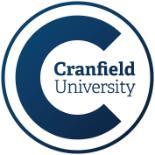
Cranfield University has been at the forefront of aerospace research and technology for over 60 years, offering a practical and holistic approach right across the business of flying. The University, at its main campus in Cranfield, Bedfordshire, and at its campus in Shrivenham near Swindon, has been active in rotorcraft research and technology development throughout this period, contributing to many of the major national and international research programmes over the years. Partners have included national government research agencies and defence departments, helicopter manufacturers and operators.
The School of Aerospace, Transport Systems and Manufacturing is home to a wide base of expertise and experience in rotorcraft experimental and computational aeromechanics, flight performance and operational analysis. On the experimental aerodynamics side, Cranfield is a member of the National Wind Tunnel Test Facility, offering three large scale low national strategic wind tunnels. In addition is has well equipped transonic wind tunnels that have been employed on rotor tip section studies involving shock wave interactions. Computational aero-prediction has also been at the heart of Cranfield rotorcraft activities for the past 20 years, with URANS, LES and DES solvers being applied to rotor and full helicopter performance simulation. The Rolls-Royce UTC in Performance Engineering at Cranfield has been at the forefront of rotorcraft performance analysis, environmental impact and mission optimisation, making major contributions on the EU Clean Sky Programme. Other research activities include rotorcraft flight dynamics and handling, structural crashworthiness, helicopter safety and accident investigation, rotorcraft reliability and helicopter gearbox lubrication and condition sensing.
Cranfield staff have participated in a number of recent national and international rotorcraft research collaborations including GOAHEAD (Generation of Advanced Helicopter Experimental Aerodynamic Database for CFD Code Validation), FRIENDCOPTER (Integration of Technologies in Support of a Passenger and Environmentally Friendly Helicopter), CLEANSKY Technology Evaluator, and the UK Defence Applied Research Programme (DARP), CleanSky2 Rotorcraft Certification by Simulation, and EPSRC Rotorcraft Simulation Fidelity.
In addition, Cranfield hosts several aircraft, including the full-size Rolls-Royce Tilt-Wing aircraft, as well as high-fidelity EVTOL models, such as the ASTON Martin Volante and Lilium models.
University of Glasgow
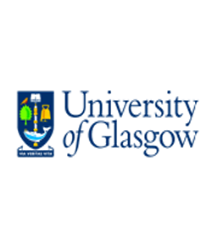 The University of Glasgow has been involved with a variety of helicopter and rotorcraft research activities since the 1980s. This has included experimental aerodynamics, some computational fluid dynamics, gyroplane flight testing, and flight dynamics and simulation. The efforts have been conducted using a range of high-quality experimental and computational facilities including large-scale wind tunnel facilities equipped with comprehensive instrumentation and dynamic rigs, an experimental autogyro aircraft, and simulation facilities. Wind tunnel experimentation for helicopter related phenomena includes dynamic stall, blade-vortex interaction, vortex-ring state, rotor wake in ground effect and brown-out. The techniques used include surface pressure measurement and PIV, and there is some experience of rotor operation and design.
The University of Glasgow has been involved with a variety of helicopter and rotorcraft research activities since the 1980s. This has included experimental aerodynamics, some computational fluid dynamics, gyroplane flight testing, and flight dynamics and simulation. The efforts have been conducted using a range of high-quality experimental and computational facilities including large-scale wind tunnel facilities equipped with comprehensive instrumentation and dynamic rigs, an experimental autogyro aircraft, and simulation facilities. Wind tunnel experimentation for helicopter related phenomena includes dynamic stall, blade-vortex interaction, vortex-ring state, rotor wake in ground effect and brown-out. The techniques used include surface pressure measurement and PIV, and there is some experience of rotor operation and design.
Glasgow has featured in a number of inter-institutional projects as a key member of the rotorcraft DARP, as part of previous and current EU projects GOAHEAD and CleanSky, and has been a member of GARTEUR networks. Much of this work has been achieved through close links with government bodies and industry, and funding through EPSRC, for example. For many years the Department of Aerospace Engineering ran an annual technical meeting which brought the UK academic and industrial communities together. Glasgow's aerodynamics and fundamental fluid mechanics work has been published in a wide range of journals including AIAA journals, AHS Journal, Journal of Fluid Mechanics, Experiments in Fluids, Aeronautical Journal.
University of Leicester
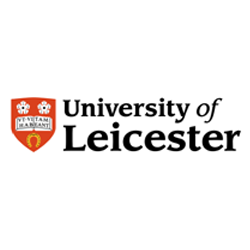 Leicester's main contribution to the VLN is in control system design. The Control Systems Research Group has been active for the last 20 years in the design and testing of control systems for rotorcraft. The Group has received several EPSRC Grants to enable this research and has also been part of the DARP, REACT and RTVP projects in conjunction with AgustaWestland and several other Universities. The Group is particularly well-known for its development of multivariable primary flight controllers, based on H-infinity optimisation, for various rotorcraft. Some of these controllers were implemented, in-flight on the NRC's Bell 205 fly-by-wire helicopter where it was demonstrated that H-infinity approaches to controller design enabled an attractive alternative design route for helicopter control laws. During the DARP project, similar controllers were developed for the AW101 helicopter. More recently, as part of the REACT and RTVP projects, its efforts have focused on the development of actuator control schemes for novel actuators and vibration management systems for vibration reduction.
Leicester's main contribution to the VLN is in control system design. The Control Systems Research Group has been active for the last 20 years in the design and testing of control systems for rotorcraft. The Group has received several EPSRC Grants to enable this research and has also been part of the DARP, REACT and RTVP projects in conjunction with AgustaWestland and several other Universities. The Group is particularly well-known for its development of multivariable primary flight controllers, based on H-infinity optimisation, for various rotorcraft. Some of these controllers were implemented, in-flight on the NRC's Bell 205 fly-by-wire helicopter where it was demonstrated that H-infinity approaches to controller design enabled an attractive alternative design route for helicopter control laws. During the DARP project, similar controllers were developed for the AW101 helicopter. More recently, as part of the REACT and RTVP projects, its efforts have focused on the development of actuator control schemes for novel actuators and vibration management systems for vibration reduction.
The Group has used control strategies based on NDI (non-linear dynamic inversion) for the control of highly non-linear semiactive lag dampers and a variety of linear control methodologies for the control of active trailing edge flaps. In addition, vibration management systems have been developed using tools from multi variable system identification and, again, H-infinity optimal control theory. The Group is also beginning to expand its capabilities in rotorcraft UAV's with a number of computation/simulation based studies. Leicester is represented in the VLN by Dr. M. Turner and Dr. R. Morales who are responsible for all the current rotorcraft research in the Control Group.
University of Liverpool
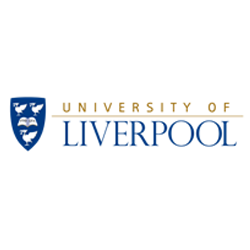
The School of Engineering at The University of Liverpool is located in a purpose-built facility to house research and teaching activities. The Flight Science and Technology (FS&T) research group operates two motion flight simulators that are used for a range rotorcraft flight dynamics, control, simulation, computational aerodynamics, handling qualities and tiltrotor research. There has a been a recent £1M upgrade to the wind tunnel facilities to provide new capability in scale model testing. The School also operates a 90,000l recirculating water channel for the assessment of ship aerodynamics and design for improved helicopter launch and recovery operations.
FS&T was at the forefront of flight simulation research for the development of Enabling Technologies for Personal Aerial Transport Systems in the EU funded myCopter project. The group is also active in Rotorcraft Pilot Coupling research, funded through the EU project ARISTOTEL and now as part of NITROS.
Rotorcraft simulation fidelity research underpins the activities at Liverpool. The current EPSRC funded Rotorcraft Simulation Fidelity project will develop new methods for enhancing flight simulation models together with motion fidelity research to define overall flight simulation fidelity methods. The work includes flight testing with the National Research of Canada’s Bell 412 fly-by-wire-helicopter and is the UK’s contribution to the NATO AVT-296 project.
The use of modelling and simulation to support helicopter-ship design and clearance activities is a strong FS&T theme. Supported by BAE Systems, FS&T have produced time-accurate airwakes of the Queen Elizabeth Class aircraft carriers and the new T26 frigate. The work has been used to risk reduce aircraft ship clearance programmes and will define the fidelity requirements for Ship Helicopter Operating Limits activities. Additional wake encounter research for wind turbines is being conducted.
FS&T has US funded research to develop novel pilot flight displays for autorotations. UAV research is another key part of FS&T’s research portfolio examining flight control requirements for UAVs operating in airwakes in/around ships and offshore platforms.
Dr Mark D White is a Senior Lecturer leading the flight simulation research work at Liverpool University. He is working on the rotorcraft flight modelling fidelity research which involves flight testing using the National Research of Canada’s Bell 412 fly-by-wire helicopter. He has a longstanding activity in the use of flight simulation to investigate helicopter ship operations and ship aerodynamics.
Dr Michael Jump is a Senior Lecturer at the University of Liverpool’s School of Engineering who is leading research using bio-inspired methods for flight control and UAV operations.
University of Manchester
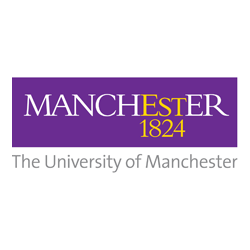
Our rotorcraft expertise is focussed on the following areas.
Rotorcraft engines: Gas turbines (turboprops and turboshafts); aerothermodynamic modelling, engine installation losses, direct operating costs estimates, degradation effects due to ageing, flight into dust and volcanic ash, combustion emissions (CO2, NOx, particulates) and integration with an airframe. Our work on rotorcraft engines is done in partnership with the aero-engine industry.
Engine intake protection systems: Design, optimisation, integration of vortex tubes, inlet barrier filters and inertial separation systems, alongside integration of these systems with the engine. We carry out analysis with first-principles methods as well as CFD. We have designed and constructed a bespoke particle separator rig for chemical/physical characterisation of particulate. We can provide detailed analysis of separation performance, also using particle image velocimetry (PIV). Physical and chemical work is done in partnership with our colleagues in the department of Earth and Environmental Sciences.
Rotor/propeller and contra-rotating propeller (CRP) design: aerodynamics, propulsion, aero-acoustics, using first principles and low-fidelity methods (combination of actuator disk, blade element methods, lifting-lines, surfaces, vortex methods, transonic corrections, URANS solutions, field acoustics and more). We apply engineering optimisation (various gradient methods, non-gradient methods, particularly particle-swarming optimisation) for a variety of engineering problems, including design and operations.
Aeromechanics of the full VTOL vehicle: Rotor-wing interaction, multi-rotor interference, tilt-rotor vehicles, mostly based on first-principles computer codes. We use a combination of lifting surfaces, lifting lines, actuator disk, plus trim equations for flight mechanics. We work on engineering problems such as the conversion corridor (tilt rotors and tilt-wings), eVTOL rotor interference, mission delivery, and risk analysis.
At Manchester, we lead the delivery of training courses on rotorcraft engineering with activities such as CPD (continuing professional development) for both VLN members and the wider market. We collaborate with important stakeholders in the rotorcraft industry on long-term research, short-term consultancies, and spin-off operations.
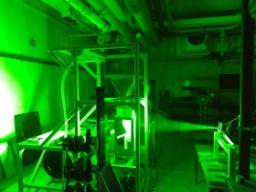
University of Bath
University of Bath
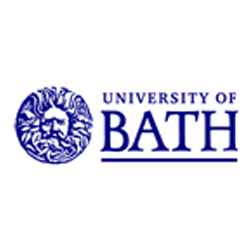
The University of Bath has a wide range of rotorcraft and vertical-lift related research, covering aerodynamics, composite materials, structural dynamics, flight dynamics, control, actuation and autonomy. Active VLN members are primarily based in the Fluid Dynamics Research Unit and the Centre for Power Transmission and Motion Control (PTMC).
The Fluid Dynamics Research Unit is engaged with rotorcraft relevant research projects covering unsteady aerodynamics, vortical flows, flow control and aeroelastic interactions. The unit has excellent facilities including wind tunnels, water tunnel and state-of-the-art laser measurement facilities. This research isfunded by EPSRC, the US Air Force Office of Scientific Research and Airbus UK.
The PTMC has a world-leading reputation as a centre of excellence in many aspects of fluid power, actuation, and the dynamics and control of electro-mechanical systems. Much of the PTMC’s research is motivated by applications in the aerospace industry. Expertise includes: Aerospace system modelling, Fuel system valve and pump characterisation and system modelling, Fuel pump motor-drive systems for More Electric Aircraft, Piezoelectric aeroengine fuel valve actuation, Condition monitoring of aeroengine fuel pumps using pressure ripple measurements, Hybrid passive/active helicopter vibration isolation, Piezoelectric flight control servovalves, and Analysing energy flow in aircraft.
Active research projects of direct relevance to the VLN include:
- airfoil load control
- unsteady aerodynamics of wings and airfoils
- active whirl flutter suppression
- rotor vibration control
- remotely-piloted and autonomous aircraft operations
- collision avoidance; primary sensors, e-conspicuity and autonomy
- agile control of small unmanned aerial systems (SUAS)
- cycloidal rotor configurations
- condition monitoring
- dynamic wind tunnel testing
VLN participants include Dr David Cleaver, Dr Jon du Bois, Prof Andrew Plummer and Prof Ismet Gursul.
QMUL
Queen Mary University of London (QMUL) is the first university in the UK to provide a degree in Aeronautical Engineering since 1908. Within the Centre for Intelligent Transport (CIT) of QMUL, the academic team are experts in all four areas of aerospace engineering: aerodynamics, propulsion and power, aerostructures, and systems. The Centre combines complementary strengths in Mechanical and Aeronautical Engineering, Power Systems, Robotics and AI, Digital Design and Manufacturing, and Advanced Materials to drive future transport and mobility technologies that better our world. CIT takes pride in being particularly strong in merging world-leading theoretical research with applied, industry-oriented experimental work, creating systems and software tools with high market potential and benefit for society.
Research within the Centre focuses on various scientific and engineering problems relevant to future transport systems and spans from Green Propulsion, Robotics, and Autonomous vehicles to Future Mobility with Environmental and Climate technologies, such as those which help reduce aircraft noise and emissions. We also carry out extensive research in Advanced Materials and Manufacturing for Future Transport. A cross-cutting theme, which is relevant for many our applications is Data Centric Systems Engineering, which includes Numerical Methods and Simulation and AI. Our research has been supported by EPSRC, EU, Innovate UK, BEIS, Royal Academy of Engineering, and other agencies and companies.
Relevant to VLN activities, our current research includes:
- Aerodynamic modelling (reduced order/high-fidelity across scales/FSI), redesign of the rotor blade and coaxial rotors
- Aerodynamic adjoint-shape optimisation of propellers/rotors using RANS/DES
- Digital-displacement-pump technology for distributed rotor propulsion systems, efficiently and accurately controlling multiple rotors from a single power source
- Analysis/design/optimisation of the control laws for single and multi-rotor Drones, VTOL and VSTOL aircraft, with fundamental nonlinear dynamics
- Design of multi-rotor UAVs for autonomously fabricating structural elements and multi-agent-aerial-robotic systems for environmental monitoring
- High-resolution measurements of unsteady rotor blade/vortex interaction and tilted rotors, experimental aerodynamics and aeroacoustics
- High-resolution installed propeller/rotor flow/noise modelling using WMLES accelerated on GPUs
ARA

Aircraft Research Association Ltd (ARA) is an independent specialist in high technology solutions in fluid dynamics and wind tunnel testing working with leading international aircraft and defence manufacturers. It has developed a world leading Transonic Wind Tunnel facility using the most advanced experimental and computational methods for deriving and analysing aerodynamic performance. Capabilities comprise:
- Flight physics analysis
- Wing shaping and design
- Propeller design and installation
- Computational Fluid Dynamics (CFD) tool development and industrialisation
- High order computational fluid dynamic analysis
- Design material analysis and development
- Test technique development
- Design and manufacture of high fidelity instrumented models for testing
- Aerodynamic test analysis tool/technique development
- Coordination of large multi business/organisation research projects
The next generation of aircraft are likely to require novel architecture, propulsion systems and wing design with radically different aerodynamic characteristics such as unique designs to provide natural laminar flow or the use of flow control devices to manage laminar flow. ARA is one of the few UK organisations which is focused on intermediate research technology from Academia (TRL 1-3) to industry use (TRL 8/9).
DSTL
 The Defence Science and Technology Laboratory (Dstl) is an Executive Agency of the Ministry of Defence (MOD) and delivers high-impact science and technology (S&T) for the UK’s defence, security and prosperity.
The Defence Science and Technology Laboratory (Dstl) is an Executive Agency of the Ministry of Defence (MOD) and delivers high-impact science and technology (S&T) for the UK’s defence, security and prosperity.
Dstl serves a customer base across MOD, Home Office, wider government departments and international partners. Capabilities span a broad range of S&T disciplines and Dstl engages collaboratively with industry, academia and other supply chain partners to enhance UK sovereign capability and economic prosperity.
Within the rotorcraft field, the majority of research is delivered in partnership with experts in UK industry and academia, many of whom are members of the Vertical Lift Network. Dstl is also an active participant in international research collaborations, including: UK-US bilateral projects; The Technical Cooperation Program (TTCP) and the NATO Science and Technology Organisation. Examples of current Dstl rotorcraft S&T activities include:
- Performance and operational analysis of in-service helicopters.
- Analysis support to system and sub-system procurement activities.
- Research into tactical operations in contested, degraded and operationally-limiting environment.
- Research into the capabilities of future rotary-wing concepts.
- Support to the Defence and Security Accelerator (DASA) to find and fund exploitable innovations quickly and effectively.
Hybrid Air Vehicles

Founded in 2007, Hybrid Air Vehicles is the company behind the innovative Airlander hybrid aircraft. Airlander can take off and land from virtually any flat surface and offers a powerful combination of flexibility, persistence, payload capacity, and efficiency. Suitable for roles from surveillance and border patrol to search & rescue and expeditionary tourism, Airlander is an aircraft that encourages customers to Rethink the Skies and consider new approaches to solving some of the toughest challenges facing aerospace today.
Leonardo Helicopters
 Leonardo Helicopters designs, develops and manufactures the widest range of rotorcraft for commercial, public service and defence applications as well as providing through life support. Leonardo Helicopters brings together the experience of Agusta in Italy and Westland in the UK, whose origins as aircraft manufacturers date back to the beginning of the last century. Leonardo Helicopters is proud to be a member of the UK Vertical Lift Network, working with other academic institutions and aerospace research bodies to meet future vertical lift challenges.
Leonardo Helicopters designs, develops and manufactures the widest range of rotorcraft for commercial, public service and defence applications as well as providing through life support. Leonardo Helicopters brings together the experience of Agusta in Italy and Westland in the UK, whose origins as aircraft manufacturers date back to the beginning of the last century. Leonardo Helicopters is proud to be a member of the UK Vertical Lift Network, working with other academic institutions and aerospace research bodies to meet future vertical lift challenges.
Vertical Aerospace
Founded by Stephen Fitzpatrick, CEO of OVO, Vertical Aerospace is building technology to revolutionise how people fly, by making air travel personal, on-demand and carbon free.
Since its inception in 2016, Vertical Aerospace has grown to over 40 world-class engineers and technical experts, recruited from the likes of Airbus, Boeing, Rolls-Royce and GE.
Vertical Aerospace’s first aircraft was launched in 2018 with CAA flight approval. Working with regulators, the company aims to begin offering intercity air taxi services within four years.
https://vertical-aerospace.com/
Sophrodyne Aerospace
Sophrodyne Aerospace
Sophrodyne Aerospace is an aeronautical research and design consultancy based in Glasgow, Scotland.
The company brings together its founders' expertise in modelling and design of fixed wing aircraft and helicopters, as well as advanced computer science, machine learning and artificial intelligence, to provide a range of business and product development support to the emergent drone, UAS/RPAS and personal air mobility community as well as to the more established aerospace industry.
GKN Aerospace
GKN Aerospace
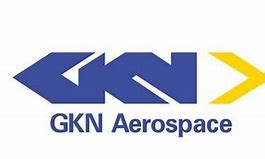
GKN Aerospace is the world’s leading multi-technology tier 1 aerospace supplier. As a global company serving the world’s leading aircraft manufacturers, GKN Aerospace develops, builds and supplies an extensive range of advanced aerospace systems, components and technologies– for use in aircraft ranging from helicopters and fifth generation fighter jets to the most used business jets, UAM vehicles, electrical aircraft, single-aisle aircraft and wide-body planes in the world. Lightweight composites, additive manufacturing, hydrogen technologies, innovative engine systems, and smart transparencies help to reduce emissions and weight on the aircraft and enhance passenger comfort. GKN Aerospace is market leading in aerostructures, engine systems, transparencies and wiring systems and operates in 12 countries at 39 manufacturing locations employing approximately 15,000 people.
Swansea University
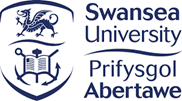
Swansea University has played a forefront role in aerospace research for more than 60 years, and the active VLN members at Swansea University are mainly based in the Zienkiewicz Centre for Computational Engineering (ZCCE).
The ZCCE is named after the founding father of the finite element method - Professor Olgierd Zienkiewicz, and this research centre has been leading computational aerospace engineering since the 1960s, especially in the aspects of dynamics and aerodynamics. In 2016, ZCCE expanded its research interest to experimental aerodynamics by developing cutting-edge wind tunnel facilities, providing a viable platform to further enhance its research capability on rotorcraft and novel Urban Air Mobility (UAM).
The ZCCE has participated in many rotorcraft-related projects, including the SABRE (Shape Adaptive Blades for Rotorcraft Efficiency, funded by the EU Horizon 2020), DigiTwin (Digital twins for improved dynamic design, funded by the EPSRC), and SAMA (Safety Investigation for UAM systems, funded by Department for Transport). These research activities allow the ZCCE to develop multiple novel technologies, including metamaterial to improve the morphing efficiency of composite rotor blades, high-accuracy digital twin simulation blocks for flying machines, and two-timescale-based inverse simulation methods for handling qualities assessment.
The ZCCE’s research focuses on the rotorcraft, and the main contributions to the VLN can be divided into four aspects:
· Flight dynamics, handling qualities, and autonomous control systems
· Flight safety, airworthiness assessment, and survivability & crashworthiness investigation
· Rotorcraft dynamics, vibration, and digital twins
· Multi-rotor system aerodynamics experiments and CFD calculations.
The primary point of VLN contact for Swansea University is Dr Ye Yuan
University of Nottingham
The University of Nottingham’s Engineering research delivers real and significant impact to society, the environment, and to our industry partners. Through our state of the art environment combined with our expertise, we develop the solutions to the most complex local and global challenges of our time. As a part of this plan, the University of Nottingham launched the Institute of Aerospace Technology (IAT) in 2009 to develop, integrate and promote its vast aerospace Portfolio.
Since its inception, the IAT has brought together over 50 academics and 400 researchers working on aerospace technology across its 5 research themes:
- Aerospace electrification
- Aerospace Manufacturing
- Aerospace Materials and Structures
- Aerospace Operations
- Future Propulsion
The Aerospace team operates as a cohesive unit with all the relevant support functions and facilities within the University at their disposal.
Notable achievements include being the fourth highest participant in the EU funded Clean Sky 2 project with rotorcraft projects focussing on:
- Development of the wing structure and cost effective intelligent manufacturing processes for the Airbus Helicopters RACER demonstrator
- Development of the power electronics and electrical architecture for the Leonardo Next Generation Civil Tiltrotor
- Development and delivery of the Power Electronics for the Airbus Helicopters RACER
Sora Aviation
SORA Aviation

Sora Aviation is a Bristol, UK based start-up developing a 30-passenger eVTOL, the S-1, with zero emissions, low noise, and affordable ticket prices for the Advanced Air Mobility (AAM) market. Founders Furqan and Malcolm have been working on eVTOL aircraft since Uber popularized the concept of Urban Air Mobility in 2016. They had the idea for an eVTOL bus in 2018 and have been pursuing it ever since.



